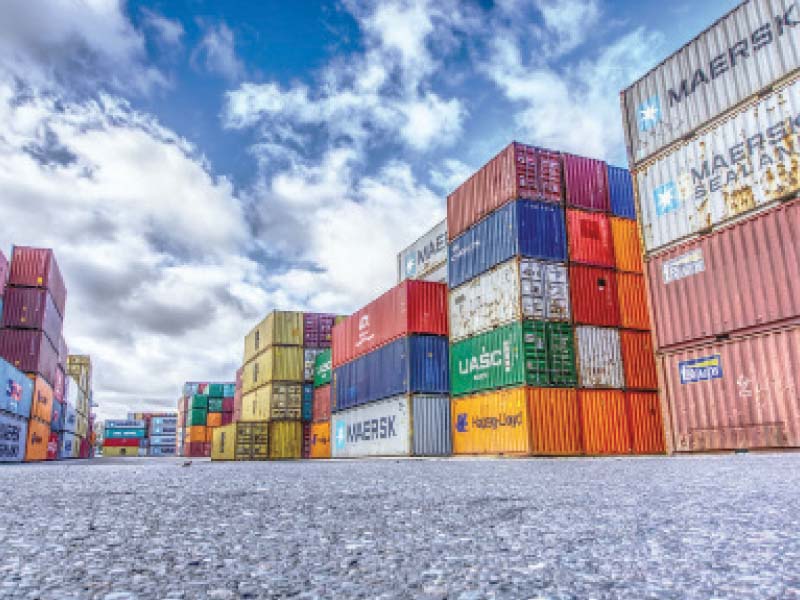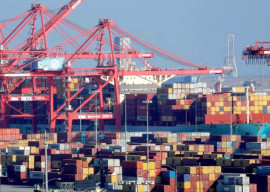
Exports are likely to cross $24 billion in current fiscal year 2020-21, which will be $2.7 billion more than the export value reported in FY 2019-20 and $1 billion more than the amount reported in 2018-19, according to data extracted from the Pakistan Bureau of Statistics (PBS).
Exports increased by 14.05% from July 2020 to May 2021 compared to the same period of previous fiscal year. The recovery in exports in the midst of a pandemic speaks volumes about the efforts made by the government to ensure that a crucial source of foreign exchange earnings keeps flowing.
According to a recent press release of UNCTAD, global trade has recovered faster from the lull observed during the pandemic than it did in the last two recessions reported in 2009 and 2015.
The rebound reported from several developing countries is faster than that reported by developed countries.
The positive outlook is a result of easing of restrictions, increasing trend in commodity prices, easing of trade policy restrictions that were imposed during the pandemic as well as use of incentives and support for specific sectors.
It is important to mention that it took about four quarters after the start of the pandemic-influenced recession for trade to recover to pre-pandemic levels. The recovery of exports from Pakistan, though, started relatively earlier.
Pakistan had been reporting a rise in exports since October 2020, when exports breached the $2 billion threshold. It maintained this level for seven consecutive months till April 2021.
However, due to Covid-19 related restrictions imposed around Eid holidays in May 2021, the exports declined to $1.67 billion for the month. A recovery is again expected as Covid-19 curbs have been relaxed.
However, the question arises whether the recovery is sustainable as Pakistan’s regional competitors have also relaxed their restrictions and are likely to experience a growth in their exports. They may recapture their lost market share.
In essence, with competition increasing from markets similar to Pakistan, the foreign buyers will have increasing options to revert back to their original suppliers, particularly if exporters have arm’s length relationship that is relatively sensitive to price changes.
Global exports
According to data provided by the International Trade Centre’s Trademap.org, total global exports were reported at $17.3 trillion, the lowest after 2016. Total global exports were at $15.9 trillion in 2016.
Interestingly, exports from China increased in 2020 while exports from the United States, Germany, Japan and the Netherlands declined. China reported its highest-ever export value of $2.59 trillion.
Exports from Pakistan declined from $23.8 billion in 2019 to $22.2 billion in 2020. Pakistan was badly hit at the onset of the pandemic as exports dived to less than $1 billion in April 2020, a 54% year-on-year decrease.
Considering the exports in terms of products, Pakistan reported an increase in exports of textile made-up articles by $200 million. It was primarily driven by the rise in exports of worn clothing and clothing accessories, which went up by $165 million.
This could be the result of a surge in demand for protective equipment as a consequence of the pandemic.
Similarly, exports of tarpaulins and tents rose by $48 million. Pakistan also reported an increase in exports of gloves and mitts as well as certain clothing apparels.
Furthermore, a 28% increase in exports of fresh or dried citrus fruit was also reported.
Although year 2020 was full of challenges to the exporters of not just Pakistan but from all over the world, it revealed that the exporters of certain products were able to take advantage of the global slowdown and expand their share in foreign markets.
On the other hand, exports of more traditional products such as cotton-based textile inputs, raw leather and hides, sugar and sugar confectionaries showed a decline in 2020. In essence, the Covid-19 shock provided an opportunity for the exporters of other non-traditional products.
Imports above $5b
Imports into Pakistan recorded a bigger surge than exports. Imports increased by 22.5% between July 2020 and May 2021 compared to the value reported in the same period of previous fiscal year.
Imports surpassed the $5 billion threshold in the past three months. Imports in May 2021 were 85.79% more than those in May 2020.
The resurgence in imports in this fiscal year has been in all major product categories, with the transport group, textile group and food group growing the fastest.
Imports of mobile phones rose by $720 million in the current fiscal year as compared to the previous year. Although imports of electrical machinery and apparatus decreased by more than 30%, the imports of office machinery and textile machinery showed an upward trend.
The increase in imports of the latter suggests new investments by textile producers, which can result in a further rise in textile exports. This is also supported by the rise in imports of raw material and intermediate goods belonging to the textile group.
Imports of completely built unit (CBU) and completely knocked down (CKD)/ semi-knocked down (SKD) transportation equipment increased by approximately $1 billion, indicating resurgence in demand for motor vehicles, which had been previously subdued due to the balance of payments crisis.
However, the pressure on the import bill from the petroleum group has been relatively subdued. Imports of petroleum crude and petroleum products were up by approximately 30%, while the increase in dollar value was marginal.
With energy demand likely to increase as pandemic restrictions are eased globally, it can again widen the trade deficit.
With economic growth projected to be higher than previously expected, the demand for imports will continue to increase. Furthermore, the rise in commodity and fuel prices will add to the equation.
However, artificial measures to curtail import growth are likely to be unproductive.
Export growth must take priority in order to earn more foreign exchange and boost reserves. This will require policies that address and overhaul the structural issues, which result not only in low export growth but dampen the profit margins of exporters. It is imperative to ensure effective trade growth strategies.
The writer is the Assistant Professor of Economics & Research Fellow at CBER IBA
Published in The Express Tribune, June 28th, 2021.
Like Business on Facebook, follow @TribuneBiz on Twitter to stay informed and join in the conversation.

1732498967-0/Outer-Banks--(1)1732498967-0-405x300.webp)
1732086766-0/BeFunky-collage-(74)1732086766-0-165x106.webp)



1732486769-0/image-(8)1732486769-0-270x192.webp)















COMMENTS
Comments are moderated and generally will be posted if they are on-topic and not abusive.
For more information, please see our Comments FAQ